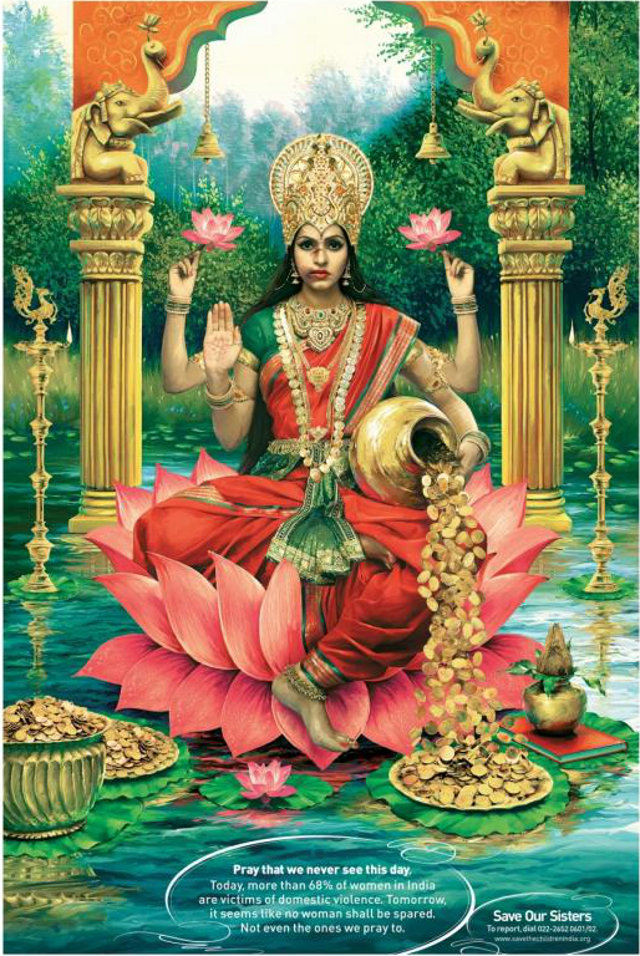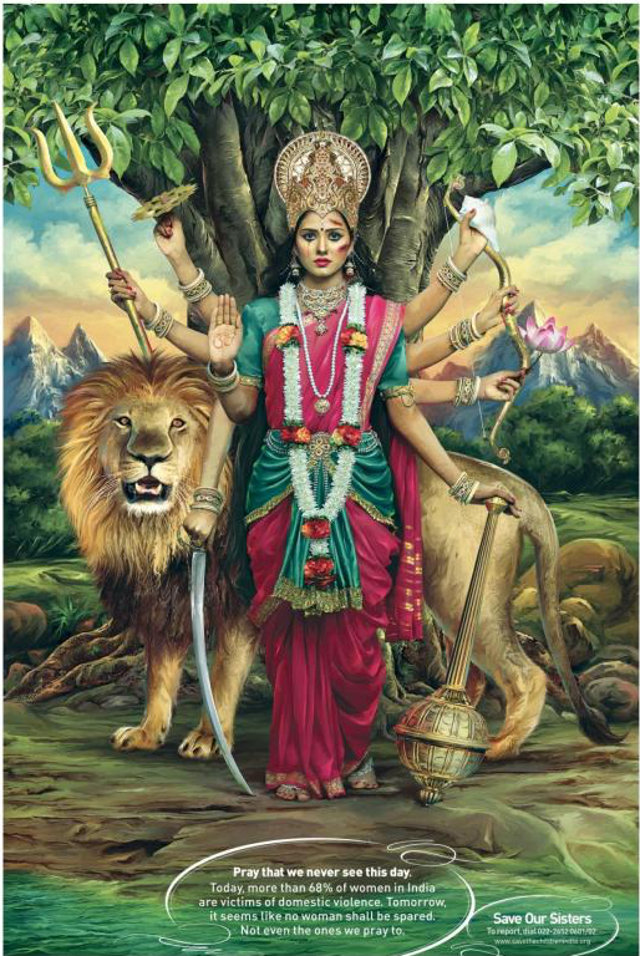The now viral abused Goddess campaign has initiated a difficult dialogue. It has caused an unsettling feeling for many who are offended at the projection of violence towards a sacred idea. So, we must then question why it appears to be ok to praise and worship mythological ethereal ideals while destroying, abusing, raping and violating that which is real- living human female flesh? The widespread sexual savagery that is devouring women globally needs a campaign that stings deeply. From what I have read online and heard in closed conversations, this campaign has struck a chord.
I think the abused Goddess taps into the virginal purity of these mythical women and further verifies the Madonna-Whore dichotomy that a majority of the men and sometimes women in India subscribe to. Women are seen as either good, the elevated status of the mother often called “Ma”- to be praised and revered. Ma is the symbolic matriarch blessing the daily operations of life. Or a woman is seen as a poor choice for marriage, worthy of being killed in the womb, burnt for dowry, murdered as a part of honor killings, fornicated with, physically abused, sexually humiliated or worse – raped and then killed. To challenge this dichotomy and pollute the safe categorization of women as either Madonna or Whore is bound to upset a few people.
The Hindu goddesses Lakshmi (goddess of wealth and prosperity) and Durga (goddess of power, moral order, and righteousness) are interesting choices. Perhaps the message is that if men abuse these goddesses, there will be a direct correlation with their own prosperity and power. A patriarchal culture may only appreciate and understand a direct hit to the things that give them that sense of chauvinistic pride. Saraswati (goddess of knowledge, science, music and arts) is also part of the trinity of abused goddesses. By causing trauma to culture, many elements of life are rendered indescribable and violence becomes the only thing that exists and can be named or described. Without music, art and knowledge, the fundamental violation goes beyond just the female form – it digs deep into the very fabric of Indian culture.
I applaud the Mumbai-based ad firm Taproot India for challenging men and women to look beyond their mythology and abolish the icons for a deeper understanding of how to change the status quo for women currently in India. I strongly disagree that the campaign disempowers women or the goddesses in a sense that the target audience is men, not women. No man wants his “Ma” or “Mother” to be the product of violence. Perhaps my feminist sisters should understand that the way to make changes to a society that has such deep roots in religious ideology is to educate through the very iconography that impacts their emotions and what can be more emotional that seeing the abuse of ‘Ma’.
Quote from the Ad campaign.
“Pray that we never see this day. Today, more than 68% of women in India are victims of domestic violence. Tomorrow, it seems like no woman shall be spared. Not even the ones we pray to.




